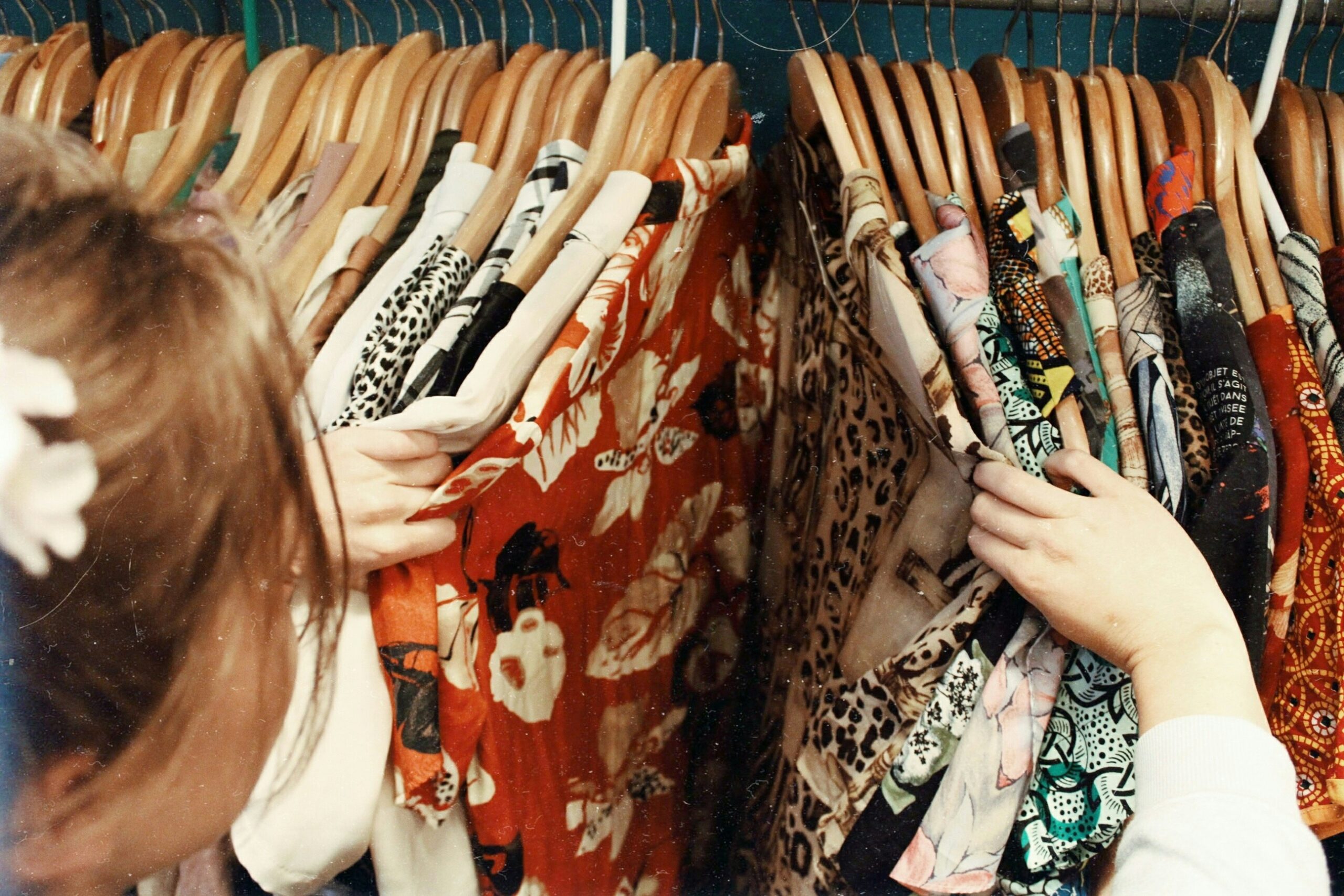Earlier this year jewellers in China saw a rush for what’s called ’gufa gold’. Local media reported on six-hour-long queues outside specialist retailers including one Shanghai outfitter where a line that formed at 5.30 am grew to 900-strong by the afternoon.
Known in English as ‘ancient-gold’ but more commonly called ‘heritage-gold’, the category is rooted in the purity of the metal used, and jewellery items are frequently marketed with an ancient cultural twist. Many feature hours of specialist artisan techniques and craftsmanship, like filament or hammering, while traditional Chinese motifs are often present. Heritage-gold also comes in other forms such as coins, medallions and vessels.
One of the places customers waited the longest to buy these products was the Beijing flagship of Laopu Gold, a brand that has become something of a poster child for the craze. Lines outside the shop were said to last for days over the Chinese New Year period.
Dubbed the ‘Hermès of gold’ in China, the company offers products ranging from diamond encrusted gold jewellery and ornaments to tableware and seasonal gifts.
Founded as a local shop in 2009 by Xu Gaoming, a former fisheries clerk, the Laopu Gold brand was established seven years later. The company went public last June, with share prices rising over 80 percent on opening day.
By February, the brand had become red-hot. Shares soared further, increasing over tenfold in less than a year making Laopu Gold a standout on the Hong Kong Stock exchange. Profits reached between 1.4 and 1.5 billion yuan (around $200 million) in 2024, according to company forecasts at the time, reflecting annual growth of between 236 and 260 percent.

But what’s driving the stellar performance of ‘heritage-gold’ brands like Laopu? And how concerned should global brands be about the craze? After all, most western jewellers find it challenging, if not impossible, to tap into this segment of the China market in an authentic way.
Global Gold Rush
One factor is the rising value of the precious metal used in the jewellery. After reaching record highs in March, gold prices spiked even higher in April, fuelled by global economic uncertainty and market volatility linked to US President Donald Trump’s tariffs and an escalating trade war with China.
“The surge has been driven by heightening geopolitical tensions, central bank purchases, currency fluctuations, and increased investor demand for safe-haven assets [like gold],” said Sean Hoey, managing director of IBV International Vaults London which provides private safe deposit services, noting a rise in Chinese clients seeking the firm’s offering.
Laopu Gold’s sudden upsurge in popularity, alongside that of larger rival Lao Feng Xiang, a Shanghai-based jeweller founded in 1848 with a vast nationwide footprint and a handful of outlets in North America and Australia, is partly linked to soaring gold prices.
“Given the high craftsmanship and brand premiums embedded in [heritage] gold jewellery, its price is particularly sensitive to movements in the broader gold market,” confirmed Chensuo Sun, an expert from China Forum of the Center for International Security and Strategy, Tsinghua University.

In February, Laopu increased prices by 5-12 percent, according to The Straits Times. The Beijing-based company is said to command a relatively high profit margin, with the media citing Laopu’s bestselling gourd-shaped pendant—an auspicious symbol in China—containing 24.4 grams of gold and sold for more than 29,000 yuan, at around 1,200 yuan per gram. This compares to other brands selling similarly weighted jewellery for 900 yuan per gram, in line with the 700-yuan gram spot price for gold at the time.
Laopu Gold could not be reached for comment.
Sun believes there’s a limit to how far the craze can go. “In the short run, bullish expectations on gold can spur speculative buying, especially among younger consumers drawn to lighter-weight and design-forward items…[which] offer a balance between cultural symbolism and affordability. However, if prices continue to surge, consumers may adopt a wait-and-see approach, leading to softer demand.”
Laopu has also been pitted against larger Hong Kong rivals such as Chow Tai Fook and Chow Sang Sang and Shenzhen-based Chow Tai Seng. These jewellers are focused more on modern, contemporary designs but some have cashed in on the trend by ventured into heritage-gold styles.
Another point of differentiation is Laopu’s operational strategy. The brand has reportedly avoided franchising—a model that some Hong Kong competitors enthusiastically embraced to grow their businesses in the mainland market. But with 33 mono-brand China stores, Laopu is a minnow compared to competitors with much larger store networks such as Chow Tai Fook, Chow Sang Sang, Lao Feng Xiang and Chow Tai Seng.
Chow Sang Sang has 871 mono-brand stores in China, dwarfing not only Laopu but also the brand’s international competitors. Richemont-owned French jeweller Cartier counts 71 stores while LVMH-owned Italian jeweller Bulgari has 62 across the country (comprising mainland China, Hong Kong and Macau).

Some of the customers buying China’s ‘heritage-gold’ brands are also fans of global luxury brands, according to local media reports citing people queuing outside Laopu stores wearing labels like Chanel and Louis Vuitton. But one reason some prefer Chinese ‘heritage-gold’ jewellery over western brands is because Van Cleef & Arpels, Tiffany & Co. and the like typically use 18-carat gold instead of pure gold.
Sun points to other factors driving the category’s rise in popularity such as “cultural confidence and the revival of traditional [intricate] craftsmanship.”
“Shifting consumer priorities toward ‘emotional value’ and self-reward have transformed gold from a purely ceremonial asset [such as wedding dowries] into a daily luxury,” said Sun, adding that some heritage-gold products feature an understated matte finish which “appeals to younger buyers who prioritise subtlety over ostentation.”
The health of the broader gold jewellery market is another factor.
Euromonitor International predicts an increase in gold jewellery’s share of China’s overall $9 billion luxury jewellery market. Gold, notes the firm in its December report, “is irreplaceable for Chinese consumers, particularly in contexts such as weddings and ceremonies, ensuring substantial development potential for gold and fine jewellery in the future.” However, it adds that in volume terms, sales are set to show a slight decline in the short-term.
China’s luxury jewellery market is expected to stagnate this year as consumer confidence wanes. In 2024, the market grew only 1.8 percent from over the previous year, in stark contrast to pre-pandemic boom times, when growth was at 43.5 and 53.8 percent from 2019-2020 and 2020-2021 respectively, against a market size of $5.1 billion in 2020.

Trump’s tariffs—which have notably singled out China at a staggering 145 percent rate—are likely to continue to dampen consumer confidence in an economy that has been slowing for some time. They could also rouse Chinese consumers to buy more local brands as US protectionist policies are seen as a deliberate attack on the country.
The ’guochao’ consumer trend—which describes pride in buying local goods especially those referencing traditional Chinese culture and identity—has been riding high for years. A strengthening of this patriotic shopping trend bodes well for gold houses like Laopu Gold and Lao Feng Xiang, as well as other local jewellers.
“Collaborations with cultural icons like the Palace Museum have further elevated [heritage] gold’s status as a symbol of national identity, with products such as [Chow Tai Fook’s] heritage collection, driving a ‘new China chic’ movement,” explained Sun, pointing to Chinese jewellery brands creating “pieces that resonate deeply with younger generations seeking to connect with their heritage.”
While many globally successful jewellers from the region have hailed from outside mainland China, namely Hong Kong and Taiwan, several mainland designers are now building up brands that distinguish themselves from their predecessors.
Contemporary jewellery designers in the region tend to fall in two camps, suggests Katerina Perez, founder of an eponymous jewellery blog with a following on Chinese social commerce platform Xiaohongshu. Designers either “try to appeal to a wide audience which very often results in the designs being things we’ve seen before… [or] they want to revel in trying to be different.”
Some in the latter group have partnered with international institutions for added credibility, such as Shanghai-then-Hong Kong-based designer Feng Ji taking part in the Dutch art and luxury fair TEFAF Maastricht and Hangzhou-based jeweller Hehe who exhibited at Paris’ Musée des Arts Décoratifs. Elsa Jin is another name to watch.
From small niche labels such as these to giants like Chow Tai Fook and heritage-gold specialist Laopu, local jewellers already have the upper hand when it comes to harnessing a more intimate and nuanced understanding of consumer preferences and behaviour.
In the year ahead, Chinese brands are likely to play a larger role in the local market as it becomes increasingly price sensitive and patriotic. It will be interesting to see what western competitors—especially American jewellers entangled in US-China trade war—do to remain attractive in this environment.



:max_bytes(150000):strip_icc():format(jpeg)/TAL-alaska-airline-tianas-bayou-adventure-airplane-TIANAAIRPLANE0425-0fe65397f30a422089b33ee3bad77304.jpg?w=150&resize=150,150&ssl=1)




